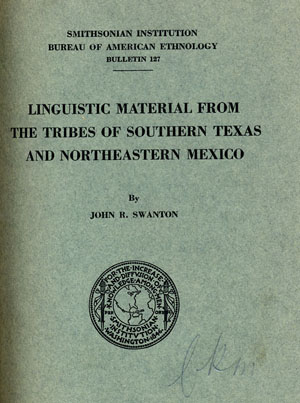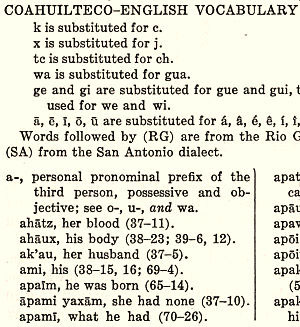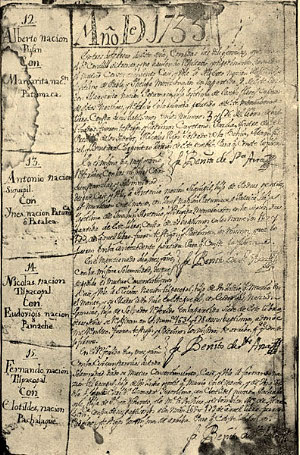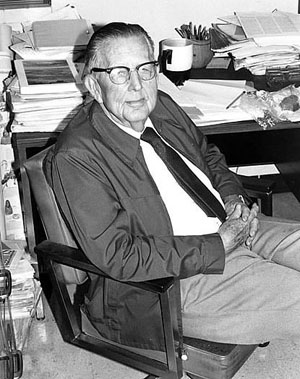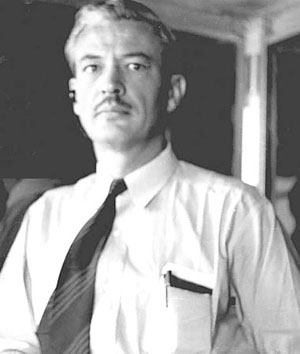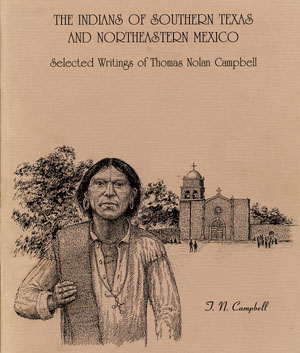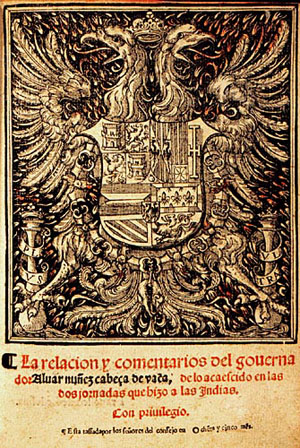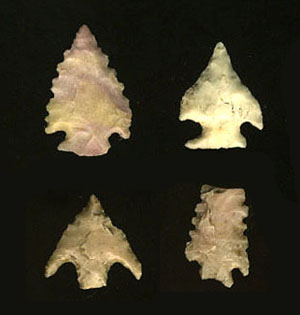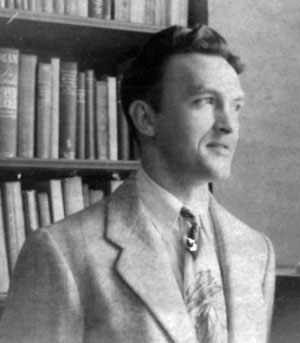How Do We Know About Native Peoples
|
The past is always fragmented, and it is particularly hard to piece together the fragmented stories of the native peoples of the South Texas Plains. Our earliest glimpses of these scattered naciones are derived solely from Spanish accounts, beginning in the late 1520s with Cabeza de Vaca who was, in essence, the state’s first ethnographer. His compelling account of his life among the “natives” provides our earliest and most detailed descriptions of south Texas indigenous peoples during this early time. Other European explorers and travelers traversed the region during the 16th and 17th centuries, but their accounts are fragmented and often conflicting, and in some cases, little more than recordings of the names of groups encountered. Even during the 18th century, the only Spanish who actually lived in the region were in the missions and their surrounding ranchos, in the villa of San Antonio, and along the Rio Grande where a series of settlements (Camargo, Reynosa, Revilla, Mier, Dolores, San Ignacio, and Laredo) were established between 1748 and 1752. Thus, while the region was occupied by a large number of native people, many had only limited contact with the Spanish. Complications with Indian Group Names Most Spaniards did not understand the native languages, and by the late 18th century, only a handful of priests had taken the time to learn one or another of those languages. Spanish is a phonetic language, and the various scribes, missionaries, and officials who wrote the reports simply tried to spell phonetically what they thought they heard. For example, we do not know today whether Pacuache and Tepacuache are names for the same people, where “Te” means something like “people of,” whether the two groups were simply related, or whether they have no relationship to one another at all, other than they both likely spoke a dialect of Coahuilteco. For the South Texas Plains, Spanish documents contain more than 1,000 names of native groups found in the region at one time or another over a 350 year period. These names, recorded centuries ago, represent what the Spanish called naciones, or groups of people who were identified by separate names. Some names came from what the groups called themselves, some came from what other groups called them, some names came from places. Other group names represented a physical or cultural characteristic noted by the Spanish. For example, the name orejon means “pull on the ear, slice of dried fruit, hind part of a plough, or (figuratively) a clown or person living in the country."The Coahilteco group listed as Orejones may have been so named for one or another of these meanings Some of the names were only mentioned once and never again. Some names are mentioned several times, and some are mentioned in literally hundreds of documents. Because about 60 percent of the names refer to localized topographic or vegetation features, it is possible that the naciones mentioned only once represent a group that typically was called by another name but found one time near a specific feature and so named at that one time. After all, in this region, the naciones represented small bands of people who did not have a single, permanent place of residence. Native peoples changed locations frequently and—with pressures from invading tribes such as the Apache and Comanche —often merged with others, losing their original group identities and names. Enter the Ethnohistorians For all these reasons and more, the small native groups of South Texas were largely ignored, or poorly interpreted, by early anthropologists. Many scholars preferred to tackle the histories of native groups with a richer historical record and more elaborate material culture. The result, as passionately expressed in 1961 by UT-Austin anthropologist W.W. Newcomb, Jr., was “a warped, poorly defined picture of savage cannibals infesting the Gulf coast and interior wastelands of an unimportant, best-ignored cultural sink.” Fortunately, in recent decades, several have taken on the task of trying unravel and piece together the complex stories of the south Texas peoples. In addition to Newcomb, whose 1961 work, The Indians of Texas, is still the only statewide ethnohistoric synthesis, two researchers in Texas stand out among the others, Thomas Nolan Campbell and Alex D. Krieger. Thomas Nolan Campbell was a professor of anthropology at the University of Texas at Austin who began his career in archeology. By the 1960s, Campbell had developed particular scholarly talent as an ethnohistorian, a person who studies native peoples through archival records and oral histories. For several decades he combed the rich array of Spanish archives at the University of Texas and elsewhere and left a published legacy. Many of Campbell's studies are relied on today as the most thorough accounts of the native people of south Texas and northern Mexico. In addition to explorers’ accounts, Campbell wrangled with mission inventories, baptismal records, and other documents, attempting to clarify the perplexing lists of native groups and reconcile the many variants of group names. For many anthropologists and ethnohistorians, the complexity of these problems would have been daunting. As W.W. Newcomb, Jr., noted in his dedication to the 1988 volume honoring Campbell and reprinting many of his studies, The Indians of Southern Texas and Northern Mexico: The magnitude of such archival research is difficult to comprehend. Perhaps it is best likened to excavating a sand dune of unknown dimensions with a child’s shovel in hopes of unearthing buried coins. Even when the quest is successful—when a mission document yields up a coin in the name of a hitherto unknown native group, or when the report of some barely literate Spanish explorer describes a previously unknown custom of an obscure people—the task has barely begun. Such information must then be evaluated for its integrity, related to the appropriate cultural context… and the whole set forth in a perceptive and thoughtful way. Campbell achieved these goals and wove together snippets of disparate information into more-complete pictures of the lives and traditions of many the south Texas groups. Tracing the Journey of Cabeza de Vaca The single most important encounter with the native peoples of the South Texas Plains is presented in a series of accounts of the travails and journey through the region taken by Cabeza de Vaca and three companions starting in 1528. Their story was recorded by scribes shortly after their 1536 arrival in Mexico City and later Spain, and published in Spain in 1555. The journey has undergone several translations, and historians and archeologists have long analyzed the route and the native peoples they encountered. The most authoritative translation and interpretation at present is the recent publication of We Came Naked and Barefoot: The Journey of Cabeza de Vaca Across North America. Published by the University of Texas Press in 2002, it is the seminal work, Alex D. Krieger. Krieger's study is based on his 1955 doctoral dissertation at the Universidad Nacional de Mexico supplemented by his own later translations of the accounts of Cabeza de Vaca and companion Fernando de Oviedo. Krieger began his work while at the University of Texas in the early 1950s when he oversaw archeological fieldwork along the Rio Grande. He decided to try and reconstruct Cabeza de Vaca's route and traveled extensively throughout the coastal plains of Texas and northern Mexico. His detailed knowledge of the lands through which the early troupe had traveled puts the explorers' accounts in proper and much more meaningful context. In Krieger's book, one can read the reports of the travelers as well as Krieger's detailed analysis of the route, the environment, and the people encountered. Traces in the Dirt Archeological research has also contributed to our understanding of the native peoples of the region. In general, archeological investigations have supported the archival accounts of mobile peoples living in small, temporary camps that left only modest evidence of their passing. Unfortunately, the archeological patterns of early historic peoples are similar to, and mixed with, prehistoric patterns left by peoples who led the same basic lifestyle over thousands of years. Except for the rare finds of items of European manufacture, we often have little ability to distinguish between archeological evidence dating to A.D. 1530 and centuries earlier unless we have radiocarbon dates. Even these are often problematic, because radiocarbon "dates" are really "assays" and statistical probability estimates than can span several centuries. There are a few south Texas sites, however, which have been radiocarbon dated to the early Historic or contact period and which have artifacts that are definitely attributable to that time. Most indicate that, with some exceptions, the subsistence strategies and basic toolkits of Late Prehistoric groups continued well into early Historic times, although the impact of European goods and other influences is often only faintly seen. For example when site 41MC296 in McMullen County was investigated prior to inundation of the Choke Canyon Reservoir, there are hints of the European influences which certainly were being felt among the native groups. Archeologists recovered a metal “case” knife blade—a common item used by Europeans for trade with native groups—along with a Guerrero arrow point, the hallmark of the Mission period. Scallorn points, a beveled knife, and bone-tempered pottery typical of earlier, Late Prehistoric peoples. The Tortuga Flat site (41ZV155) in Zavala County provides an intriguing picture of a native encampment during very Late Prehistoric or early Historic times. Radiocarbon assays indicate that the site was used in the 15th and 16th centuries. The bones show that bison, deer, rabbits, rats, and a number of other creatures were on the menu, along with mussels, snails, and doubtlessly a variety of wild plants (plant grinding tools were found). Hunters used bows and arrows tipped with Perdiz and Scallorn points, both of which are styles that first appear in Late Prehistoric times. Judging from scrapers and a beveled knife, bison were probably butchered and their hides processed at the site. Bone-tempered earthenware pottery was made, likely from local clay sources. Based on his research of mission Indians, Campbell believes the Tortuga Flat site was well within the territorial range of the Pacuache Indians. During the early 1700s, these Coahuilteco speakers lived in the “Gateway” missions near Guerrero, Mexico, but periodically left the complex for seasonal rounds of hunting and gathering. (Learn more about the Gateway missions.) Archeological research at Spanish mission sites has helped to augment Spanish records, providing a much fuller picture of how native peoples adjusted to the mission fold. Archeologists such as Mardith Schuetz, Anne Fox, Daniel Fox, Kathleen Gilmore, Thomas Hester, Kay Hindes, Robert Ricklis, and Tamara Walter, among others, have investigated mission sites in south Texas with an eye toward understanding how traditional technologies of native peoples survived or were changed in mission contexts. On a Final Note Why do anthropologists and other researchers study small, seemingly insignificant hunting and gathering groups that are now culturally extinct? Anthropologist W.W. Newcomb argues that the cultural distance between these groups and twentieth-century Americans enhances rather than diminishes their significance. In broad terms, they [hunters and gatherers] represented the kind of existence that has characterized all of mankind throughout most of the species’ existence. Any light that can be cast on one version of that life-syle deepens understanding of our forerunners and most likely addresses deep-seated characteristics of modern men. It is of equal or greater significance that a comprehension of those cultures that are small, structurally rather simple, and whose internal interrelations are fairly easily grasped can become a steppingstone to a surer, more accurate appraisal of modern, technologically sophisticated nations. The hunters and gatherers of the earth have been disappearing for centuries, the natives of southern Texas and northeastern Mexico being but obscure casualties in that genocidal progression. The progression is ending; the last of them will soon be extinct. If profit is to be realized from the wreckage, it is to salvage every bit of information that can be gleaned from their remains. And the aboriginal peoples of southern Texas and northeastern Mexico represent one of the most difficult challenges to the ethnohistorian of any area of North America.
|
|
